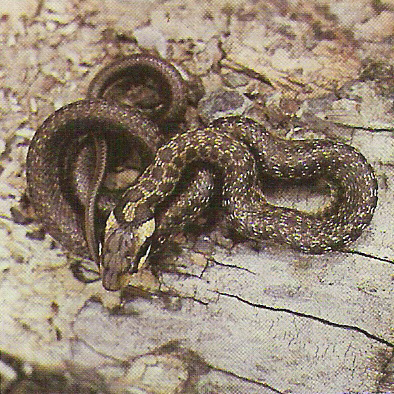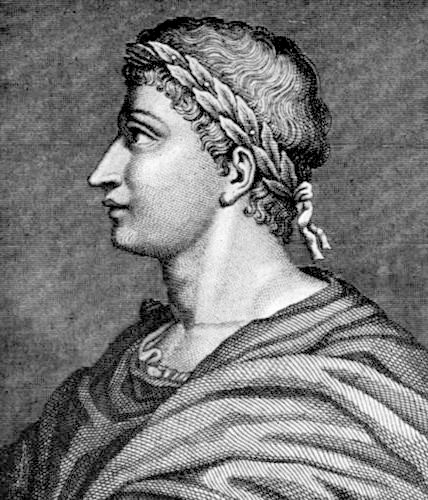|
Cocullo
Cocullo is a ''comune'' and town in the Province of L'Aquila, located in the Abruzzo region of Italy. As of 2013 its population was of 246. Geography The village is situated in the Peligna Valley, between the towns of Avezzano and Sulmona. It is linked with them by the A25 motorway and the Rome-Pescara railway line. It is a single civil parish (''frazione''), named Casale and borders with the municipalities of Anversa degli Abruzzi, Bugnara, Castel di Ieri, Castelvecchio Subequo, Goriano Sicoli, Ortona dei Marsi and Prezza. History The origins of Cocullo are closely related to the Ancient Roman town of Koukoulon, situated between Cocullo village and Casale. Snake Festival (Feast of San Domenico) Cocullo is known for its singular patron saint's holiday, named '' Festa dei Serpari'', in which the patron saint's statue (Domenico di Sora) is transported in procession covered with many snakes (mainly four-lined, aesculapian, grass and green whip snakes). The reptiles the ... [...More Info...] [...Related Items...] OR: [Wikipedia] [Google] [Baidu] |
Festival Of The Snake-catchers
The Festival of the snake catchers (or snake-charmers) (''Festa dei Serpari di Cocullo'') is an annual festival held on May 1st in Cocullo, Italy in honour of St. Dominic, patron saint protecting against snakebite and toothache. Its origins date back to paganism and have roots in an ancient celebration in honour of the Roman goddess Angitia. The festival involves a procession carrying the statue of St. Dominic, draped with living snakes, through the streets of the village. The celebration and its history After Mass, the statue of St. Dominic is brought out and paraded through the streets, completely covered in snakes, followed by the Serpari (a hereditary brotherhood of local snake-charmers) who are also draped with snakes. This festival has pre-Christian roots and is related to a much older rite, that of the snake deity, Angitia. In pagan times, the snake-charmers were the priests at the sanctuary of Angitia and the snakes were associated with healing. Cocullo was the t ... [...More Info...] [...Related Items...] OR: [Wikipedia] [Google] [Baidu] |
Autostrada A25 (Italy)
The Autostrada A25 Torano–Pescara is a motorway A controlled-access highway is a type of highway that has been designed for high-speed vehicular traffic, with all traffic flow—ingress and egress—regulated. Common English terms are freeway, motorway and expressway. Other similar terms ... which allows travel from Torano di Borgorose, Torano to Pescara in Italy. Along with the Autostrada A24 (Italy), A24 it is also named the ''Autostrada dei Parchi'' (“Motorway of the Parks”). It runs from the A24 near Torano di Borgorose, Torano, past the Fucine Lake and Avezzano, through the Apennines and the valley of the river Aterno-Pescara, Aterno before joining the A14 motorway (Italy), A14 after the Chieti exit. The A24 is 114 km in length with service stations, around 80 km apart, near each end. This route like the Autostrada A24 (Italy), A24 is currently managed by the Strada dei Parchi S.p.A.. Route External linksStrada dei Parchi S.p.A. (in Italian) {{A ... [...More Info...] [...Related Items...] OR: [Wikipedia] [Google] [Baidu] |
Castel Di Ieri
Castel di Ieri is a ''comune'' and town in the Province of L'Aquila in the Abruzzo region of Italy Italy ( it, Italia ), officially the Italian Republic, ) or the Republic of Italy, is a country in Southern Europe. It is located in the middle of the Mediterranean Sea, and its territory largely coincides with the homonymous geographical .... References Cities and towns in Abruzzo {{Abruzzo-geo-stub ... [...More Info...] [...Related Items...] OR: [Wikipedia] [Google] [Baidu] |
Abruzzo
, population_note = , population_blank1_title = , population_blank1 = , demographics_type1 = , demographics1_footnotes = , demographics1_title1 = , demographics1_info1 = , demographics1_title2 = , demographics1_info2 = , demographics1_title3 = , demographics1_info3 = , timezone1 = CET , utc_offset1 = +1 , timezone1_DST = CEST , utc_offset1_DST = +2 , postal_code_type = , postal_code = , area_code_type = ISO 3166 code , area_code = IT-65 , blank_name_sec1 = GDP (nominal) , blank_info_sec1 = €33.9 billion (2018) , blank1_name_sec1 = GDP per capita , blank1_info_sec1 = €25,800 (2018) , blank2_name_sec1 ... [...More Info...] [...Related Items...] OR: [Wikipedia] [Google] [Baidu] |
Prezza, Abruzzo
Prezza is a town and ''comune'' in the province of L'Aquila, in central Italy Italy ( it, Italia ), officially the Italian Republic, ) or the Republic of Italy, is a country in Southern Europe. It is located in the middle of the Mediterranean Sea, and its territory largely coincides with the homonymous geographical re .... References External links * https://web.archive.org/web/20100514093712/http://www.prolocoprezza.it/ * http://www.holidayhomesprezza.com Cities and towns in Abruzzo {{Abruzzo-geo-stub ... [...More Info...] [...Related Items...] OR: [Wikipedia] [Google] [Baidu] |
Goriano Sicoli
Goriano Sicoli is a ''comune'' and town in the Province of L'Aquila in the Abruzzo region of Italy. Goriano is a medieval town of about 600 people (2013). The town, which sits on top of a mountain in southeast Abruzzo (about an hour and a half east of Rome and near the Adriatic coast town of Pescara), was made somewhat famous by M. C. Escher in his print of the town which hangs in the National Gallery of Art in Washington. Italian historical documents reference Goriano beginning around 816, but local residents claim the town is early Roman and existed in some form over 2000 years ago. Goriano Sicoli (literally, the Goriano of Sicily) lies at the south east end of the Comunità Montana Sirentina region of Abruzzo. This group of mountain towns includes ski resorts, castles, a Roman bridge, water wheels and rural churches. The region runs along both sides of the river Aterno, which flows from the regional capital L'Aquila L'Aquila ( , ) is a city and ''comune'' in central Ita ... [...More Info...] [...Related Items...] OR: [Wikipedia] [Google] [Baidu] |
Aesculapian Snake
The Aesculapian snake (now ''Zamenis longissimus'', previously ''Elaphe longissima''), is a species of nonvenomous snake native to Europe, a member of the Colubrinae subfamily of the family Colubridae. Growing up to in length, it is among the largest European snakes, similar in size to the four-lined snake (''Elaphe quatuorlineata'') and the Montpellier snake (''Malpolon monspessulanus''). The Aesculapian snake has been of cultural and historical significance for its role in ancient Greek, Roman and Illyrian mythology and derived symbolism. Description ''Z. longissimus'' hatches at around 30 cm (11.8 in). Adults are usually from 110 cm (43.3 in) to in total length (including tail), but can grow to , with the record size being . Expected body mass in adult Aesculapian snakes is from . It is dark, long, slender, and typically bronzy in colour, with smooth scales that give it a metallic sheen. Juveniles can easily be confused with juvenile grass snakes ('' ... [...More Info...] [...Related Items...] OR: [Wikipedia] [Google] [Baidu] |
Elaphe Quatuorlineata
''Elaphe quatuorlineata'' (common names: four-lined snake, Bulgarian ratsnake) is a member of the family Colubridae. The four-lined snake is a non- venomous species and one of the largest of the European snakes. Description The species' common name refers to the markings seen on the body of adult snakes: four dark stripes running along a yellowish brown body. Juveniles, by contrast, have a dorsal series of dark brown blotches with alternating dark brown spots on the sides, all on a pale brown background. A black line runs from the corner of the eye and the belly is cream to white with darker markings. Adults can reach a length of , rarely . Adults are among the heaviest European snakes but are greatly variably in size, with males potentially weighing from and females potentially weighing from within the Aegean Islands. Distribution Four-lined snakes are found in Italy, along the whole western coast of the Balkan peninsula, in the western half of Greece and many of the Greek ... [...More Info...] [...Related Items...] OR: [Wikipedia] [Google] [Baidu] |
Procession
A procession is an organized body of people walking in a formal or ceremonial manner. History Processions have in all peoples and at all times been a natural form of public celebration, as forming an orderly and impressive ceremony. Religious and triumphal processions are abundantly illustrated by ancient monuments, e.g. the religious processions of Egypt, those illustrated by the rock-carvings of Boghaz-Keui, the many representations of processions in Greek art, culminating in the great Panathenaic procession of the Parthenon Frieze, and Roman triumphal reliefs, such as those of the arch of Titus. Greco-Roman practice Processions played a prominent part in the great festivals of Greece, where they were always religious in character. The games were either opened or accompanied by more or less elaborate processions and sacrifices, while processions from the earliest times formed part of the worship of the old nature gods, as those connected with the cult of Dionysus and the ... [...More Info...] [...Related Items...] OR: [Wikipedia] [Google] [Baidu] |
Sulmona
Sulmona ( nap, label= Abruzzese, Sulmóne; la, Sulmo; grc, Σουλμῶν, Soulmôn) is a city and ''comune'' of the province of L'Aquila in Abruzzo, Italy. It is located in the Valle Peligna, a plain once occupied by a lake that disappeared in prehistoric times. In the ancient era, it was one of the most important cities of the Paeligni and is known for being the native town of the Roman poet Ovid, of whom there is a bronze statue, located on the town's main road and named after him. History Ancient era Sulmona was one of the principal cities of the Paeligni, an Italic tribe, but no notice of it is found in history before the Roman conquest. A tradition alluded to by Ovid and Silius Italicus, which ascribed its foundation to Solymus, a Phrygian and one of the companions of Aeneas, is evidently a mere etymological fiction. The first mention of Sulmo occurs in the Second Punic War, when its territory was ravaged by Hannibal in 211 BC, who, however, did not attack the ci ... [...More Info...] [...Related Items...] OR: [Wikipedia] [Google] [Baidu] |
Ancient Rome
In modern historiography, ancient Rome refers to Roman civilisation from the founding of the city of Rome in the 8th century BC to the collapse of the Western Roman Empire in the 5th century AD. It encompasses the Roman Kingdom (753–509 BC), Roman Republic (509–27 BC) and Roman Empire (27 BC–476 AD) until the fall of the western empire. Ancient Rome began as an Italic settlement, traditionally dated to 753 BC, beside the River Tiber in the Italian Peninsula. The settlement grew into the city and polity of Rome, and came to control its neighbours through a combination of treaties and military strength. It eventually dominated the Italian Peninsula, assimilated the Greek culture of southern Italy (Magna Grecia) and the Etruscan culture and acquired an Empire that took in much of Europe and the lands and peoples surrounding the Mediterranean Sea. It was among the largest empires in the ancient world, with an estimated 50 to 90 million inhabitants, roughly ... [...More Info...] [...Related Items...] OR: [Wikipedia] [Google] [Baidu] |



